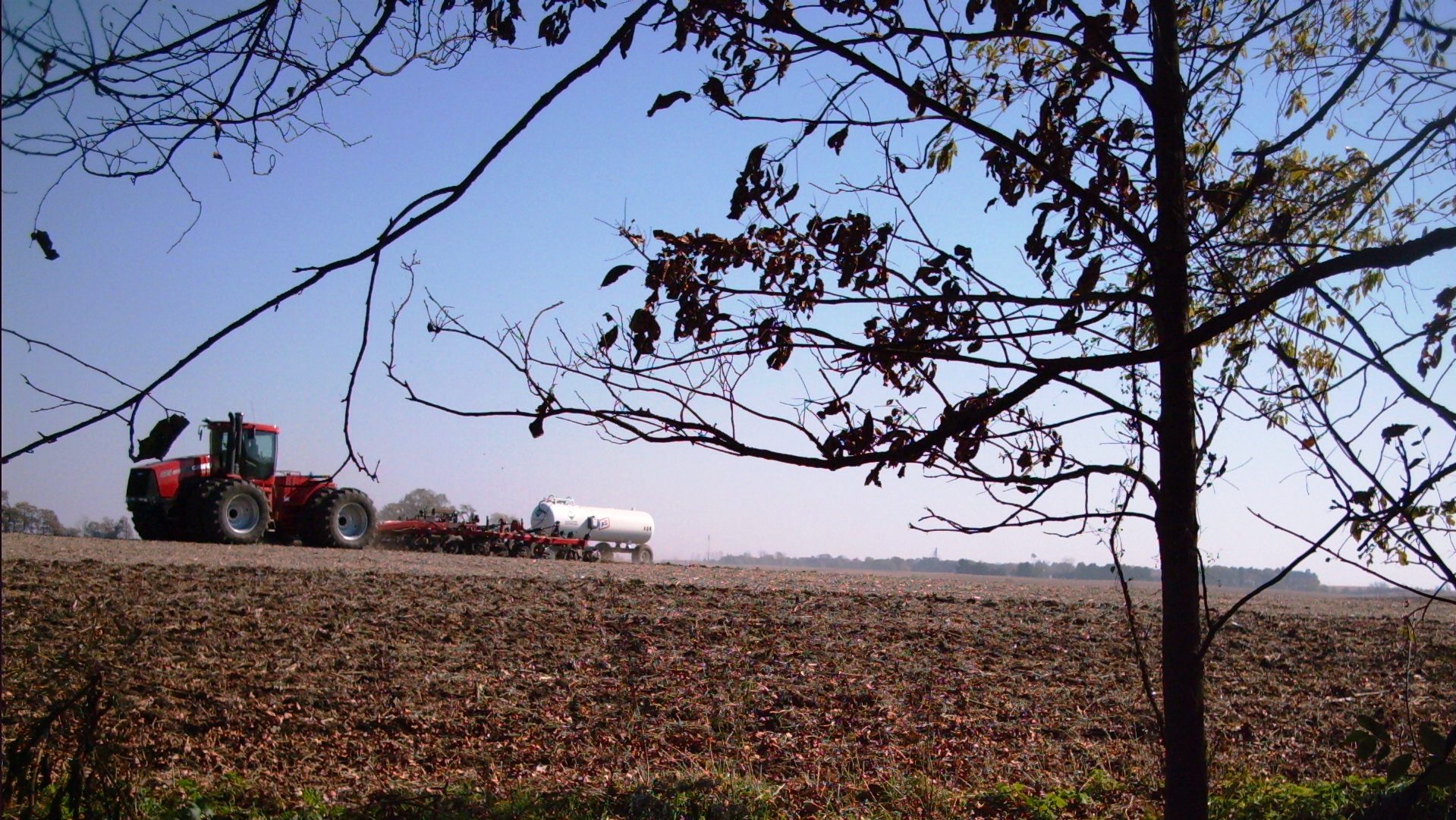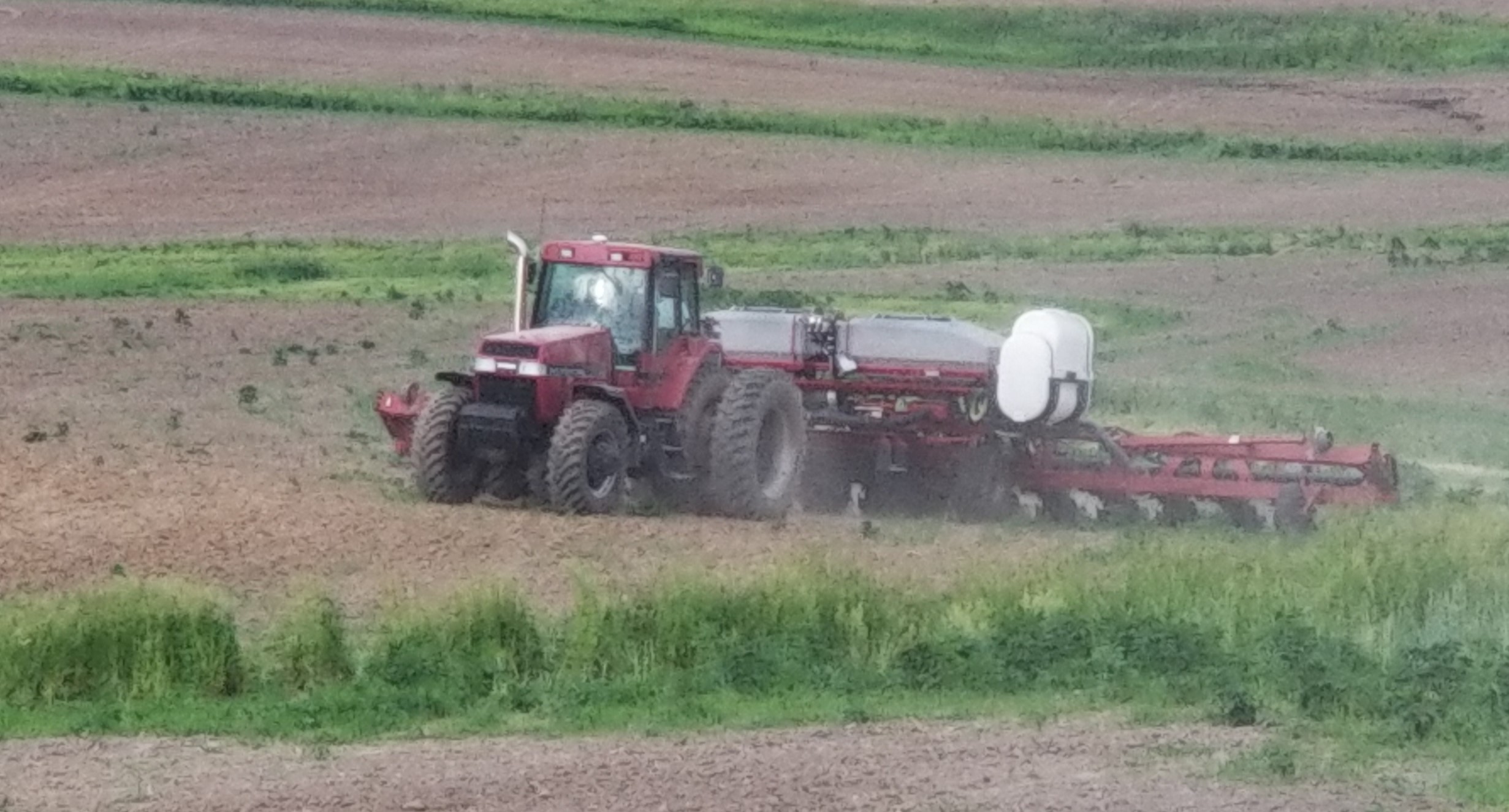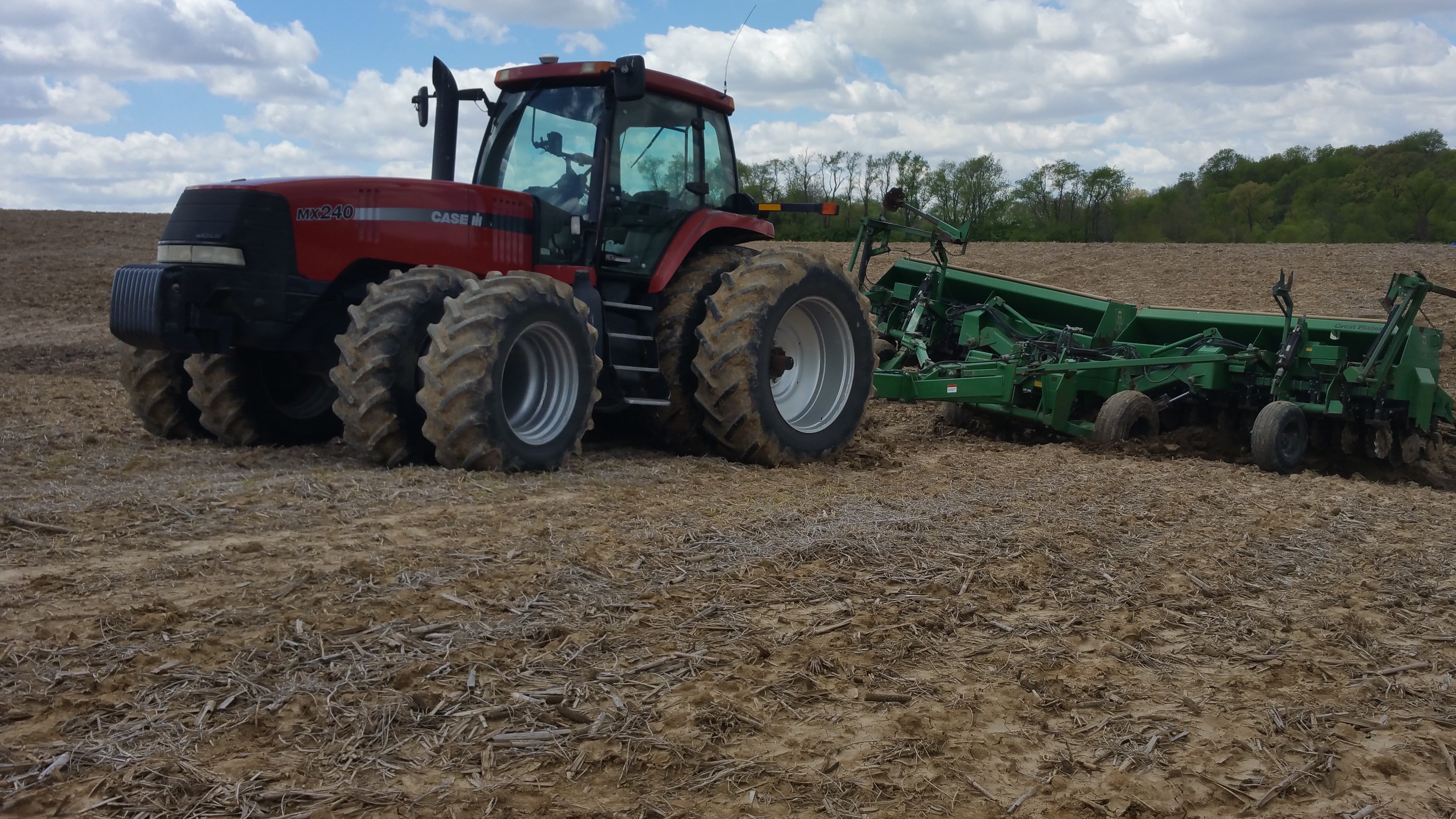 |
|
| The farm itself is located
in Northwestern Illinois, and our farm year cycle runs about from March
to March for grain operations. March is when we do
mechanical prep work on equipment, repairs of any overwinter damage
(rodents, birds, etc.) and generally get ready for field work. |
 |
 |
In April as soon as the weather allows
field work starts. We practice No-Till at the Rottweiler
Ranch, but some level of erosion damage happens ever few years so those
repairs are made 1st. The grain farming alternates corn then
soybeans rotate on a yearly basis, and the field work is a little
different for each. Starting in 2017 we started growing some
of our own hay, and that again is a different operations.
Corn is planted between April 10 and June 10, weather permitting.
Soybeans are planted about a week later, but just dry fertilizer is
applied for soybeans to supply P & K while with corn we have to
add N (Nitrogen). Left is an Anhydrous Ammonia application.
|
| Planting is done as soon
as the soil tempature gets warm enough and the moisture is right.
We plant corn in 30 Inch rows, soybeans in 15 Inch rows. Yes, GPS
guidance is used it reduces waste and saves time! Same
with fertilizer and later herbicide application. |
 |
 |
Hay seeding isn't done every year, but when we
do that we use a grain drill (which in 2017 Grant managed to get
throughly stuck). Grain drills have much narrower spacing than
planters, but they are not as accurate with seeding rates(pounds per
acre or seeds per acre), or seed placement (depth that the seed is
placed in the ground). The drill is also used in the fall to
apply a cover crop when appropriate (wheat, rye or barley) that is
killed in the spring. Cover crops help greatly with soil
retention, organic matter, fertilizer scavaging and weed control.
Again GPS guidance is used to save time, and reduce waste. |
| |
|
| |
|
| |
|
| |
|
| |
|
| |
|
| |
|


